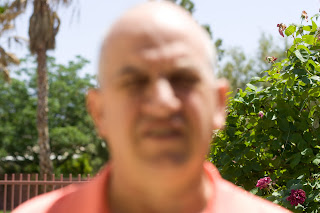First the rehash and then the settings. I know I just spent considerable time discussing ISO, F-stop and shutter speed, but what the hey. Here comes a quick recap.
Lied a photograph of the Bellagio Fountain for no particular reason. F22, 1/160, ISO 200
Shutter speed: Shutter speed is the length of time the shutter allows light to get to the sensor. The faster the shutter speed the greater the likelihood of freezing motion and eliminating camera shake. To obtain the wanted shutter speed you can adjust ISO or the F-stop. Slow the shutter speed to raise the F-stop, or to lower the ISO setting.
F-stop: Is used to control how much light gets to the sensor. The lower the setting the more light gets to the the sensor. So at a setting of F2 more light gets to the sensor than a setting of F8. To obtain a faster shutter speed use a wider opening F-stop such as F4 or F2.8. On the other hand to get greater depth of field use an F-stop such as F16 or higher.
ISO: Is the scale used to identify how sensitive the sensor is to light. A lower number decreases the sensitivity to light, and a higher number increases it. With ISO 100 a slower shutter speed or a smaller F-stop is needed than at ISO 400. The higher the ISO the greater the risk of digital noise.
It is the interaction of ISO, F-stop, and shutter speed that controls light in camera. Understanding the interaction of the three and learning to manipulate the interaction is key to better photographs. It is the difference between bad pictures and good pictures, good pictures and great pictures. The reason is that photography is nothing more than understanding light and manipulating it. Hey that sounded pretty good, but it is a little overstated.
My sister has just recently become a photo fanatic. She is out at a lake near her house frequently, and spends time photographing flowers in other people yards (She takes so many photographs she can't grow her own), and then there are the grandchildren. She is just at the beginning of understanding ISO, shutter speed and F-stop. She has taken some beautiful photographs. The reason is she has an innate understanding of "pretty". An understanding of pretty can overcome not knowing the technical stuff.
Enough of this already let's cover some settings. The first one is the easiest one. On some cameras it is "P" for program, "A" for automatic and it used by those of you who just want to click the shutter. On most cameras today they will set the ISO, shutter speed, F-stop, get milk or beer at the store, train your dog, and sing Mary Had a Little all at the same time. Usually the camera will tell you if the picture is about to be ugly. There will be a light that will flash or something. The only thing you really have to watch is getting too close. If you get too close you get a pic like this:
Cameras just don't like too close and so they get even by screwing up the photo. Well unless you shoot macro, but that is another story. Somewhere in that manual you never read is the minimum focusing distance. I think they should have a built in tape measure.
For the rest of these you may have to actually get the dreaded manual out to see how to set you camera. I know I get a little wordy but those manuals, they don't even try to tell a joke. The next setting is aperture priority. Aperture is another term for F-stop. When using this setting the photographer will determine the F-stop (aperture) the camera will do all the rest of it for you. That's it set the F-stop take the photograph. On a Canon this is called Av. Why? I don't have the slightest idea. I guess since they make the cameras they could have called it swiss cheese. It just doesn't make sense to me. The name for this setting varies from manufacturer to manufacturer.
Shutter priority is the third setting. This works just like aperture priority except you set the shutter speed. The camera will then determine the correct F-stop, and with some cameras even the ISO.
So there you have it, those pesky settings. There are a bunch of other settings usually accompanied with little pictures, but I don't understand the purpose of them. If someone out there wants to write about them I would be more than happy to post it.
One final note these posts are to help you understand how a camera works. It is my hope that some of you will take better photo as a result. In other words when faced with a difficult shooting situation you will think and then shoot. The important thing however is to get the shot. If your Daught Jane is about to dunk the basketball and your ISO is set on the ugly side take the pic, your new born son decides to pee just after you took her diaper off and hits your husband grab the camera even though it will be underexposed and shoot. Sometimes they aren't great photographically, but they are just great. The most important thing is what I call "get the shot" There are no etched in stone rules, don't stop because just because you read something here or there that says this or that. Just get the shot and have a good time. Like these two:
Friday, May 6, 2011
Subscribe to:
Post Comments (Atom)




No comments:
Post a Comment